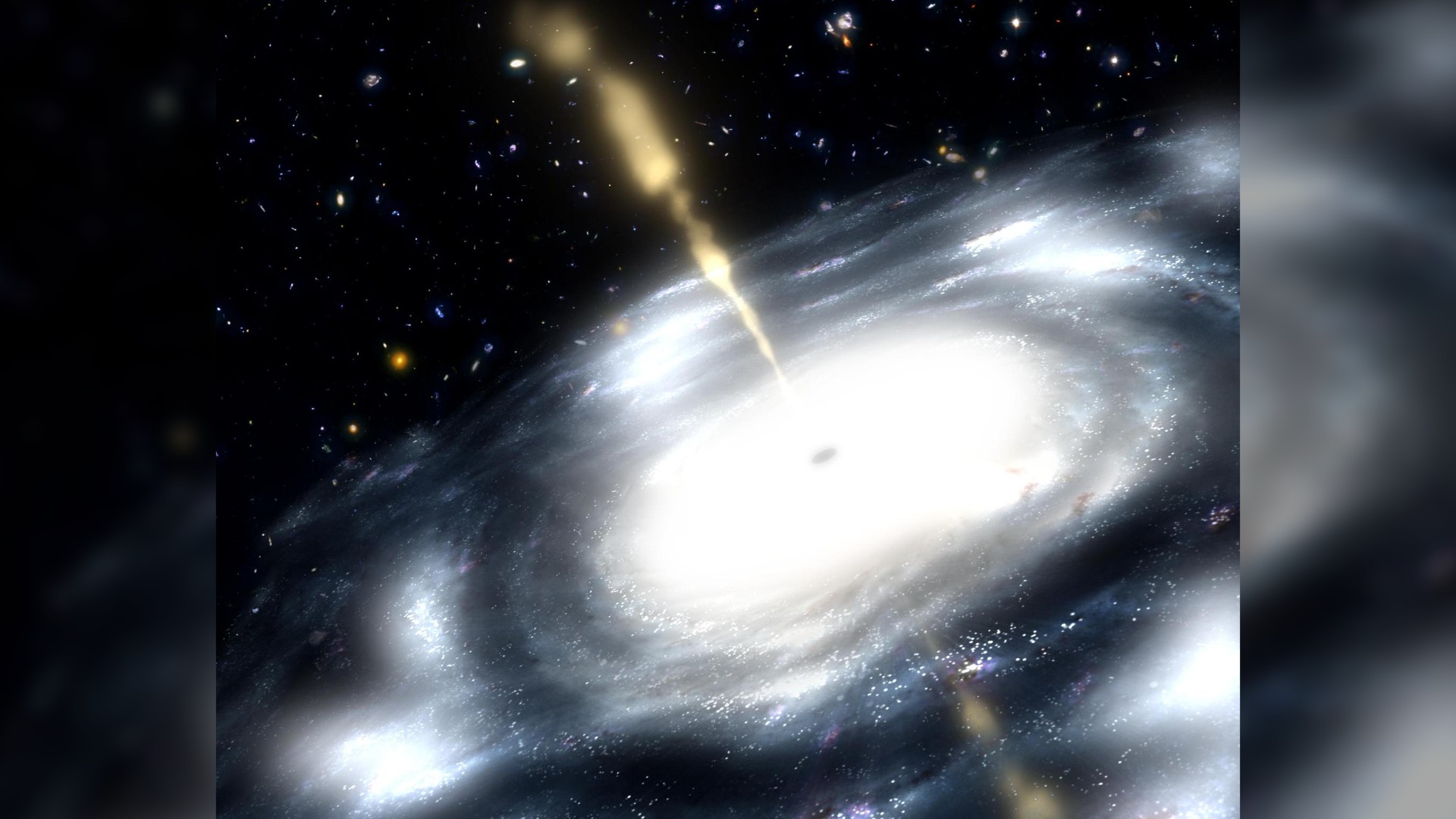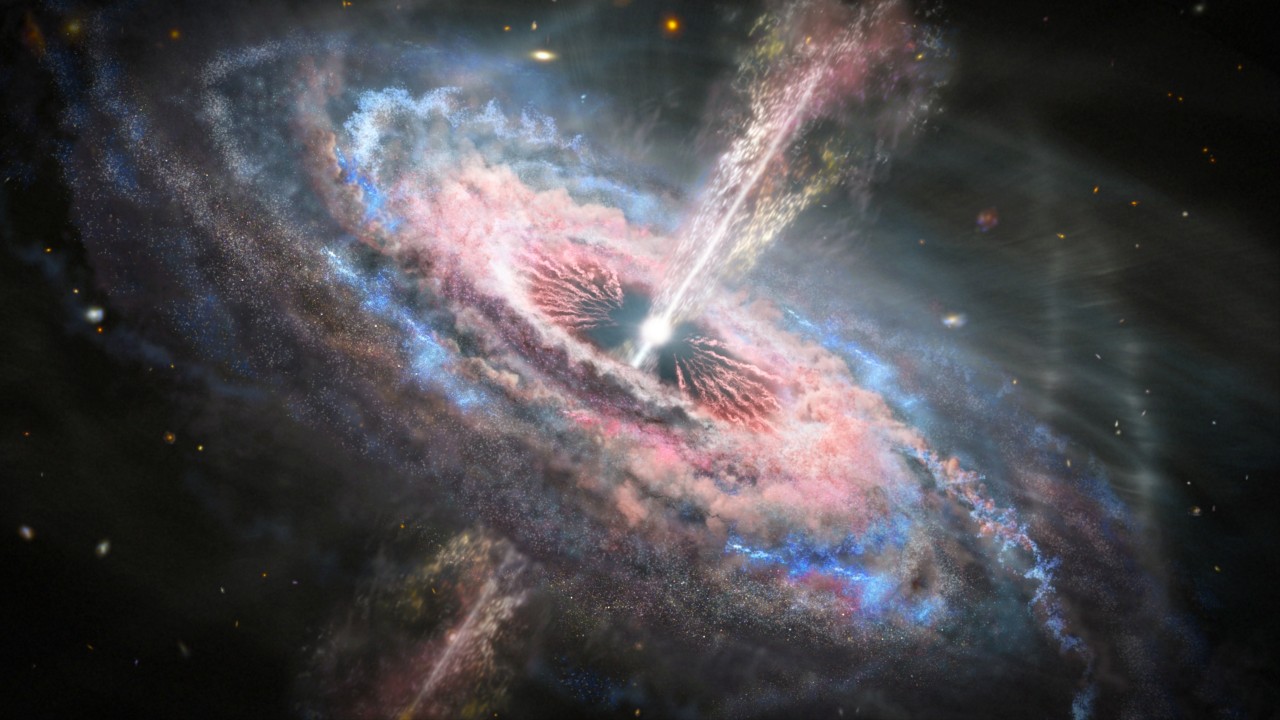What's the biggest black hole in the universe?
What's the biggest black hole in the universe, and is there a limit to how big black holes can get?

Black holes are some of the most massive single objects in space, but what's the biggest one in existence, and how big can they get?
It turns out that there is a theoretical limit to the size of black holes — celestial objects so massive that even light cannot escape them. And the largest directly observed black hole with a confirmed mass is right around this limit.
This monster, appropriately named TON 618, weighs roughly 40 billion solar masses. TON 618 has a radius of over 1,000 astronomical units (AU), which means that if the black hole was placed in the center of the solar system, by the time you reached Pluto, you would be less than 5% of the way from the center of the black hole to its edge.
To put that in perspective, here is a fun NASA animation compating the size of our sun to the size of TON 618:
TON 618 sits about 18.2 billion light-years away from Earth. In the night sky, it sits on the border between the constellations Canes Venatici and Coma Berenices. Astronomers first spotted it in a 1957 survey from the Tonantzintla Observatory in Mexico but didn’t realize what it was. They first thought it was a faint blue star, but observations a decade later revealed that the astronomers had glimpsed intense radiation from the material falling into the giant black hole.
TON 618 powers a quasar, one of the brightest objects in the entire universe with the illuminating power of 140 trillion suns. Quasars draw light from the gravitational energy of the central black hole. Material around the black hole falls in, and as it does so it compresses and heats up, releasing enormous amounts of radiation. While individual events like the most powerful supernovas can briefly outshine quasars, they only last a few weeks. In contrast, quasars can shine for millions of years.
However, quasars are so far away that they only appear as faint spots of visible light in even the most powerful telescopes, and astronomers first detected them by their powerful radio emissions.
Sign up for the Live Science daily newsletter now
Get the world’s most fascinating discoveries delivered straight to your inbox.

Quasars are actually supermassive black holes that are feeding. Supermassive black holes become enormous through a combination of merging with other black holes and by constantly feeding on surrounding material.
This feeding rate is what sets the limit on the size of a black hole. These cosmic vacuum cleaners can only consume so much material in a given amount of time. As material falls in, it heats up and releases radiation (creating a quasar), but that radiation heats the material itself, preventing it from quickly falling into the black hole. This self-regulation prevents black holes from growing too quickly. Astronomers can estimate a maximum mass for a black hole by taking that feeding rate and multiplying it by the known age of the universe, giving an estimated maximum mass of around 50 billion solar masses.
However, that is only an estimate. There may be other, more exotic, ways to create large black holes, such as from the direct collapse of large clumps of dark matter in the early universe. So it's still possible that there are even more massive black holes out there.

Paul M. Sutter is a research professor in astrophysics at SUNY Stony Brook University and the Flatiron Institute in New York City. He regularly appears on TV and podcasts, including "Ask a Spaceman." He is the author of two books, "Your Place in the Universe" and "How to Die in Space," and is a regular contributor to Space.com, Live Science, and more. Paul received his PhD in Physics from the University of Illinois at Urbana-Champaign in 2011, and spent three years at the Paris Institute of Astrophysics, followed by a research fellowship in Trieste, Italy.









